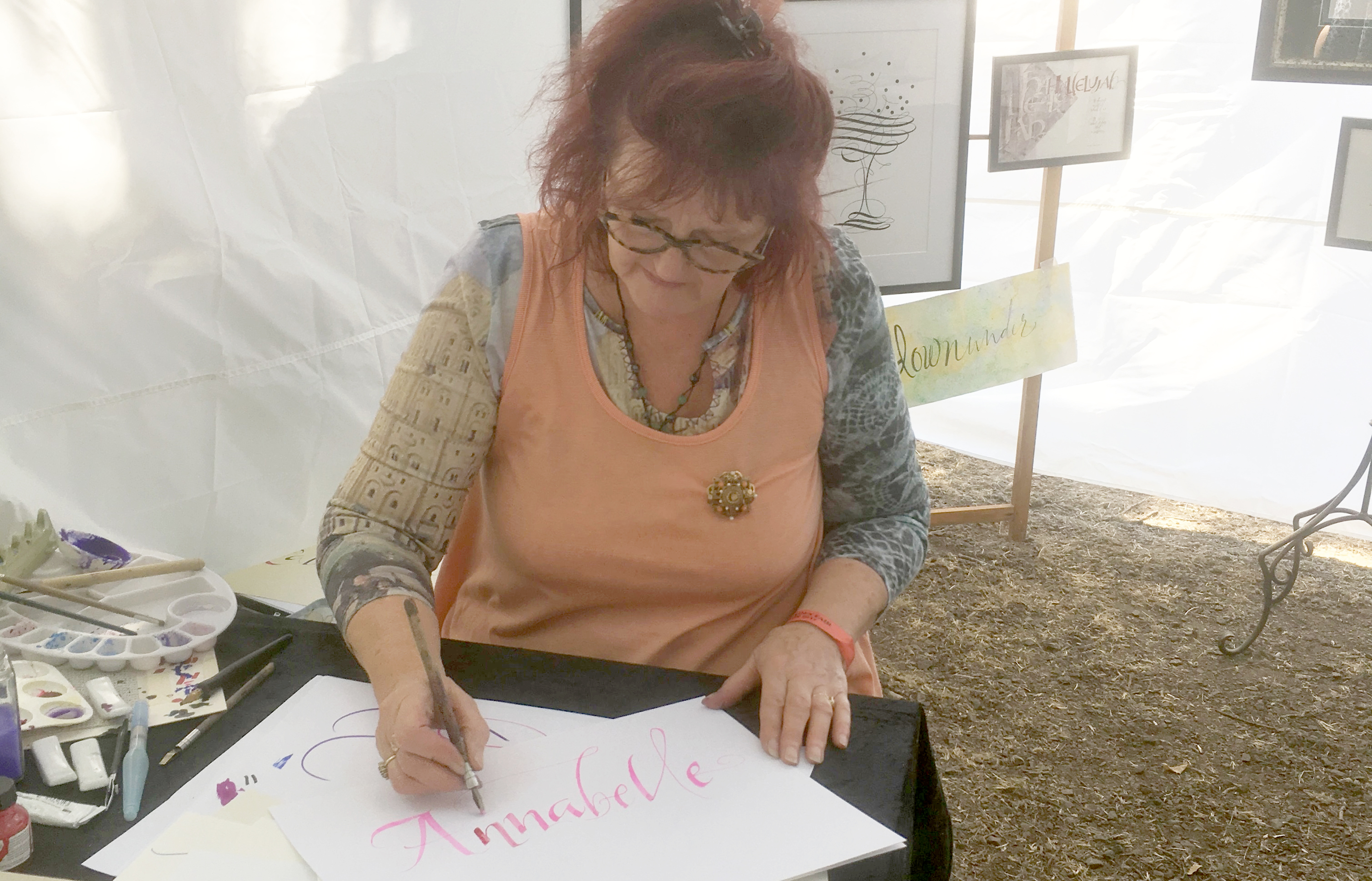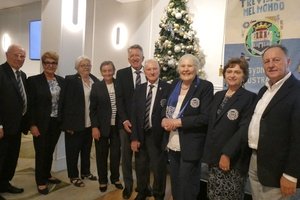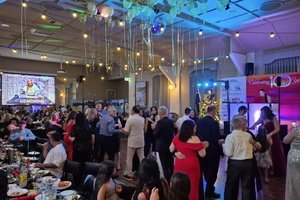Professional calligrapher Lauchean Duncan has run her own calligraphy business for 25 years and put her skills on display at the two-day event.
“There’s definitely a Roman connection with calligraphy,” Lauchean says.
“Quite often when people think about calligraphy, they think of the German Gothic styles or the Celtic and English styles, but really it’s more Italian than anything.”
For example, Trajan’s Column, dating from AD 113, is an Italian masterpiece and still an influential testament to the early form of the art for calligraphy students. It gives the best example of Roman square capitals, an ancient Roman form of writing used for inscriptions and the basis of modern calligraphy.
Italian scribes were also influential in the evolution of calligraphy later on in the 14th and 15th centuries, such as the change from the heavy, angular Gothic scripts to the Humanist script. It was also around this time that Ludovico Vicentino degli Arrighi wrote and published the first instruction book for the Cursive Chancery style of calligraphy, also known as Italic.
Lauchean's first time participating in the fair was a great success, and the thousands of visitors to her stall enjoyed displays on the origin of writing, how writing has evolved and how calligraphy is used today in her work. She also had artwork for sale, including handmade books, and held demonstrations throughout the day, as well as offering the public the chance to buy a handwritten version of their name.
Born in New Zealand, Lauchean began her career as a printer there, but it wasn't until she moved to Australia that her passion for calligraphy was born, something that she believes is in her blood.
She went on to study calligraphy at the College of Decoration but, although she graduated with top folio of the state, Lauchean regarded her abilities as average until she spent some time learning from the masters of the art. One of those masters was Sheila Waters, who learnt from students of Edward Johnston, instrumental in rediscovering the lost art of calligraphy.
Lauchean now holds calligraphy courses, which she bases largely on historical Italian calligraphy styles, at RMIT and in her own studio. She uses these old styles to inspire the development of new ones.
While the craft might have gained popularity with the rise of the computer, Lauchean explains that this has had a negative effect on the quality of some of the work.
“People are not taking the time to develop the skill,” she adds.
Although the use of the computer may be seen as a threat to this ancient art of handwriting given the multiple styles on offer, Lauchean welcomes it as something that has helped her spread her work further.
“Now it has evolved to the point where there has been an upsurge of interest in calligraphy lettering,” she says.
“Even though there is some poorer work out there, the digital age is still creating a greater interest.”
After 30 years of involvement with this ancient craft, Lauchean feels that her passion for calligraphy is actually continuing to grow.
“I’ve still got an amazing passion for what I’m doing and I’m continuously learning more,” she reflects.
“Through the availability of what’s online, you can really see what’s going on out there in the world and it really excites me as to where I might take my art.”












